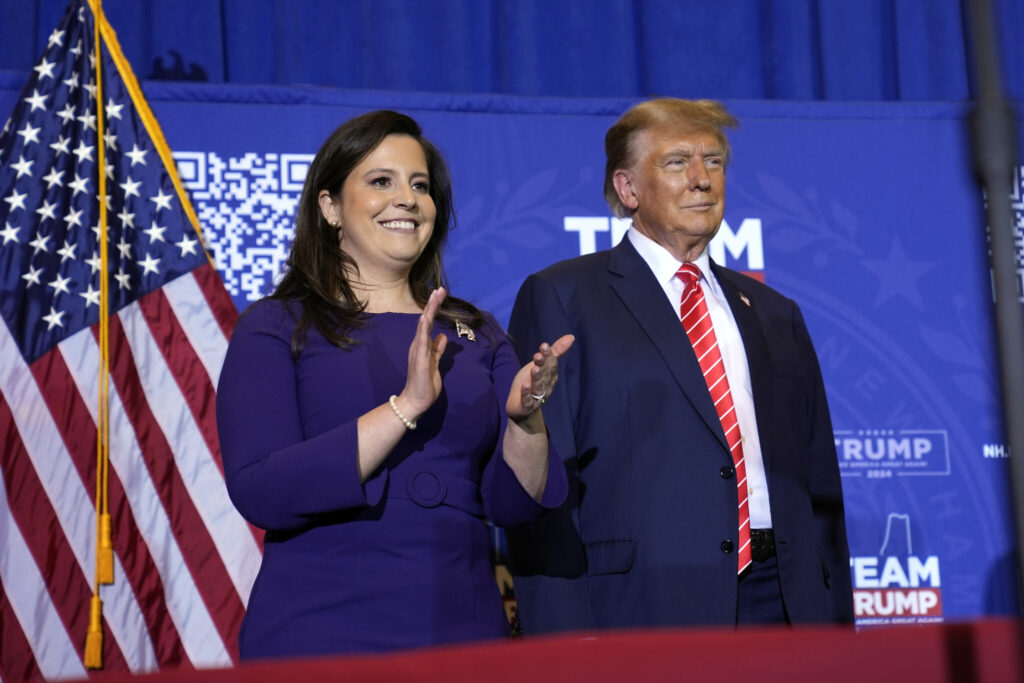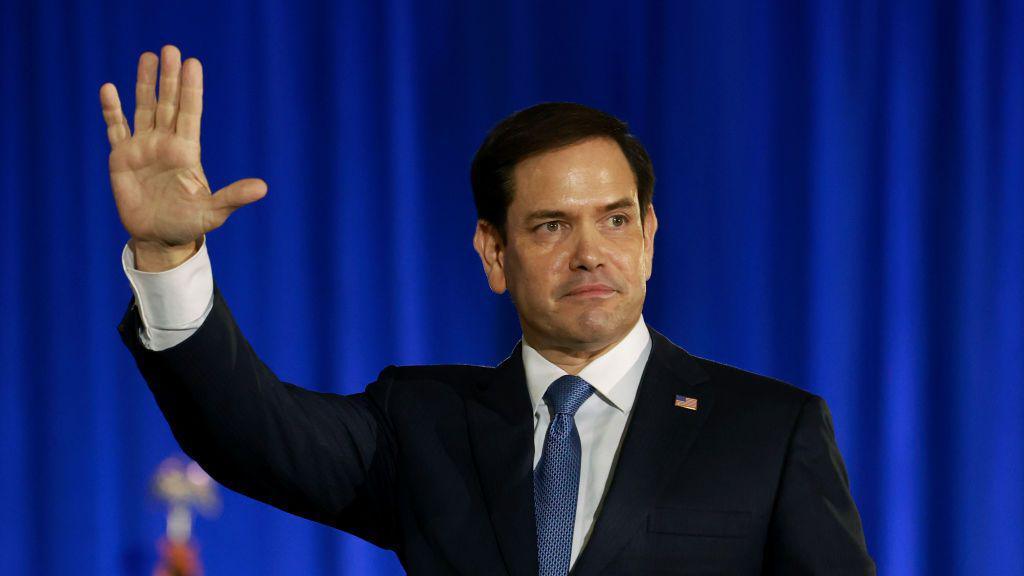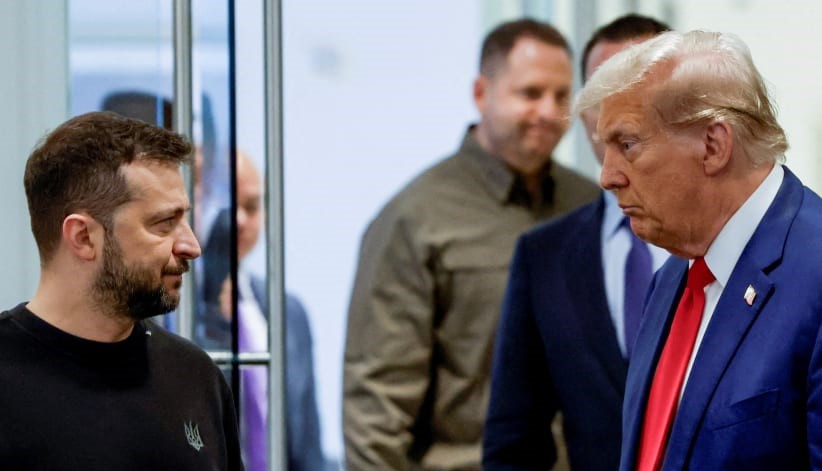President-elect Trump will take office at the White House on 20 January, after electors formally cast their votes on 17 December for their states' chosen candidates and sent the results to Washington.
World leaders and Ukraine are holding their breath to face a new kind of Trump foreign politics that is still unknown and may be unpredictable.
The upcoming Trump presidency poses significant challenges for Ukraine. During his presidential campaign, Trump said he would end the war in Ukraine within 24 hours and wouldn’t commit to approving additional US aid to Ukraine if reelected.
According to experts, the worst-case scenario for Ukraine under a Trump presidency would be the US cutting off military assistance and Trump attempting to force Ukraine into a negotiated settlement with Russia on terms favorable to Putin, which includes ceding occupied territory to Russia.
Euromaidan Press spoke to experts on the likelihood of the worst-case scenario and how Ukraine can develop new approaches to preserving vital military aid, maintaining US attention on the war, and securing continued US leadership in supporting Ukraine against Russian aggression.
Trump's return a “challenge, not disaster” for Ukraine
Mykola Murskyi, a Director of advocacy at the US-based aid NGO Razom for Ukraine, said that Trump's election win is not a disaster for Ukraine or American policy toward Ukraine.
“But it is indeed a big challenge,” he added, explaining that Trump's statements about "ending the war in 24 hours" and his running mate J.D. Vance's more explicit calls for forcing Ukraine into negotiations with Russia will require increased advocacy work to overcome.
According to Murskyi, Ukrainian organizations will need to work intensively with Trump's transition team to explain why stopping weapons deliveries to Ukraine won't end the war.
Oleksandr Merezhko, chair of Ukraine's parliamentary foreign affairs committee, told Euromaidan Press the worst possible scenario would be if the US cuts off military and technical assistance, potentially leading to Trump forcing Ukraine into negotiations with Putin under terms favoring Russia.
Trump has repeatedly claimed to end the war in 24 hours. Though he hasn't presented any plan, it is largely expected to involve Ukraine ceding land to Russia. Kyiv has repeatedly stated that Ukraine cannot discuss concessions regarding security or territorial integrity.
However, Merezhko does not believe the worst-case scenario would come to fruition under Trump: the American political system has safeguards that limit the president's free will.
“Trump cannot do whatever he wants without the approval of other institutions,” he explained.

Alyona Getmanchuk, founder and director of the New Europe Center think tank and freelance senior analyst at the Atlantic Council's Eurasian Center (USA), told Euromaidan Press that if such a deal forces Ukraine into de facto capitulation and without security guarantees, it could trigger Russia to new and potentially more extensive aggression by the middle or end of Trump's term—not only against Ukraine but possibly other countries in the region.
"Ukraine will look like a country that was given up to Putin, and Trump will look like a person who handed Putin victory in the war and helped him rebuild the actual Russian empire," she said.
Expert of the Foreign Policy Council Ukrainian Prism, director of the North America Program Oleksandr Kraiev, told Euromaidan Press that the probability of the most catastrophic scenario following Trump's team announcements has slightly decreased.
According to Kraiev, Trump is taking into account the mistakes of his first presidential term, 2017-2021, and is trying to make his team more representative than during his first term. There are a much larger number of women, conservatives, not just Trumpists, moderate Republicans.
“He's [Trump - ed.] not just going with his loyalists and radicals. He's seeking more balanced representation, which could be more positive for Ukraine,” he said.
Merezhko says to avoid the worst-case scenario, Ukraine needs to understand Trump and his entourage's mentality, who he listens to, and the American political system and institutions that stop the president's will.
Divided views on Ukraine support within the Trump team
US President-elect Donald Trump has already begun forming his administration and is meeting with potential candidates before his inauguration on 20 January.
The appointment decisions appear divided, with some appointees leaning toward continued support of Ukraine, though more align with Trump's skepticism about sustained aid and his desire to freeze the war.
"There are people in his environment who are not in favor of Ukraine, who see Ukraine as a problem that needs to be solved as soon as possible, at any cost, maybe even territorial concessions," said Oleksandr Merezhko, chair of Ukraine's parliamentary foreign affairs committee.
Among them is Peter Hegseth, whom Trump appointed as defense secretary. The 44-year-old military veteran and conservative media personality has argued that the US is spending too much supporting Ukraine's fight against Russia. Hegseth has advocated for a more isolationist foreign policy approach, which could impact support for Ukraine.

Trump's nominee for US Ambassador to the United Nations, Elise Stefanik, the House Republican Conference chair, has been one of Trump’s staunchest supporters in Congress for years. Despite previously calling the war in Ukraine "Putin's genocide" and urging the US to provide full support, she has not supported assistance to Ukraine in 2024.

Another skeptical figure is Vice President-elect J.D. Vance, who proposed ending the war by establishing a "demilitarized zone" on Ukrainian territory and denying Ukraine NATO membership for 20 years.
Currently, up to 40% of the representatives in the Trump administration support continued aid for Ukraine.
One such supporter is Mike Waltz, Trump's choice for National Security Advisor. While Waltz advocated for supporting Ukraine in 2022, he has recently called for reassessing American goals in the war, arguing that US resources are now critically needed in the Indo-Pacific region.

Marco Rubio, Trump's appointee for US Secretary of State, represents another complex position on Ukraine. Initially a vocal supporter of Ukraine following Russia's 2022 invasion, Rubio has since adopted a more pragmatic approach.

He was among the 15 Republican lawmakers in the Senate who voted against the $95 billion military aid package for Ukraine. However, analyst Daniel Kochis suggests Rubio's opposition stemmed not from concerns about supporting Ukraine itself but from what he saw as insufficient compromises with the Biden administration on immigration policy.
In discussions with NBC, Rubio advocated for a "negotiated settlement" to the war, explaining that this stance isn't because he's "on Russia's side," but rather because "unfortunately, the reality of it is that the way the war in Ukraine is going to end is with a negotiated settlement."
Kraiev believes Trump makes the decisions himself, suggesting that his appointees' influence lies not in decision-making but in implementation.
"For instance, Waltz is different from Trump. Trump's unpredictability will be somewhat smoothed out at the edges because these people will slightly moderate this policy during the implementation process," Kraiev noted.
Reasons Trump may support Ukraine despite his isolationist stance
Trump's isolationist strategy aims for a "very quick" resolution to the war, with a willingness to negotiate peace on terms that favor Russia. However, Oleksandr Merezhko believes that Trump's desire to avoid appearing as a loser and drawing parallels with Biden, whom Trump criticized for withdrawing US troops from Afghanistan, may prevent any rash moves.
Trending Now
"He doesn't want to be accused later of saying, 'Look, you criticized Biden,' and have the same thing happen because of reduced aid to Ukraine," Merezhko explained.
Mykhailo Samus, Deputy Director of the Center for Army, Conversion, and Disarmament Studies for International Affairs, told Euromaidan Press that everyone would see the United States had retreated from Afghanistan under one president, then from Europe under the second.
Trump's fear of appearing weak in front of China is another factor that could play in Ukraine's favor.
"The US withdrawal from Ukraine would mean withdrawal from Europe, which would mean losing the US's global influence. This will mean a stronger China," Samus said.
Ukraine’s possible approaches for dealing with the new administration
Since the Russian full-scale war began, Ukraine has been demonstrating why it needs help by reaffirming the values upon which America is built.
However, Merezhko argues that Ukraine's strategy of appealing to Democrats through values, beliefs, and principles will not be effective with Trump.
Merezhko emphasizes that it is crucial to develop a clear argument demonstrating why supporting Ukraine benefits the United States, particularly within Trump's "America First" framework. He suggests positioning Ukraine not as a burden but as a strategic asset.
According to the Financial Times' sources, two points in Zelenskyy's "victory plan" were specifically crafted with Trump's potential return to power in mind. The first proposal involves replacing some US troops stationed in Europe with Ukrainian forces after the war concludes. The second point, proposed by Trump ally Senator Lindsey Graham, suggests establishing joint Western and Ukrainian control over the country's critical natural resources. Sources indicate that Trump expressed interest in these proposals after reviewing the plan presented by Zelenskyy to American top officials, including Trump, in late September.
Kraiev emphasizes that Ukraine must develop a strategic approach focusing on issues that might interest Trump. "You can't be an improviser even if you're working with an improviser," he notes. He argues that Ukraine offers compelling economic and reputational advantages, potentially giving Trump what he seeks in international relations: a strong political position and economic benefits for both himself and America.
Oleksiy Honcharenko, a Ukrainian politician and member of the European Solidarity faction, emphasizes that Ukraine must clearly demonstrate its value to the USA. He points to Ukraine's military strength, significant role in global food markets, and substantial technological and resource potential. "We must continue to develop and not stop," Honcharenko states, while noting that Ukraine needs to improve its communication strategy with the USA.
Oleksandr Merezhko suggests that this strategy should involve identifying and building relationships with Republican allies who can reach Trump's inner circle. This foundation would enable Ukraine to respond effectively to Trump's unpredictable decisions. The key lies in adopting Trump's language of wins, deals, and American prosperity while establishing strong connections with his congressional allies.
Coming from a business background, Trump will prioritize securing advantageous deals for himself and attempt similar negotiations with Putin. However, Merezhko cautions that Putin might prove challenging as he operates neither on business principles nor strategy.
Merezhko and Samus suggest that Ukraine should emphasize its potential role in America's competition with China and position itself as a key ally in this broader strategic context. Trump advocates an "Asia first" strategy, arguing that the USA should focus on containing China while leaving Europe to handle Ukraine.
According to Samus, Trump wants to end the Ukrainian war because he believes it distracts from addressing the China issue and domestic rebuilding. "That's it. He's not interested in anything else," Samus notes, adding that "if the US withdraws from Europe, it means China is getting stronger."
Svitlana Kovalchuk, PhD in Political Science and Executive Director of the Yalta European Strategy ES conference, believes that leveraging the China factor is crucial for gaining favor with the Trump administration. Trump's campaign promise to impose tariffs of 60% or more on Chinese goods makes China's potential involvement in Ukraine's recovery a sensitive issue.
"Accordingly, excluding China from rebuilding Ukraine would confirm Kyiv's commitment to its Western partners and meet the expectations of the conservative US administration," she explains.
Kovalchuk identifies additional areas where Ukraine could present itself as an asset to the USA: enhancing regional cooperation with Romania and Poland (particularly through energy projects involving US companies like ExxonMobil and NuScale Power) and developing Black Sea logistics hubs.
She suggests Ukraine should embrace Trump's transactional approach to foreign policy while avoiding security or territorial concessions, emphasizing that economic and infrastructure deals benefiting American businesses could be key to maintaining support from a potential Trump administration.
Will Europe step in to fill the potential US aid gap?
The outgoing Biden administration is working to rapidly allocate the remainder of over $6 billion in military aid for Ukraine before President-elect Donald Trump takes office, fearing the new administration will halt the weapons shipment. The United States' role is critical not just for aid but also for global leadership.
As of July 2024, the US has provided Ukraine with €98.4 billion ($103 bn) in aid since the start of the full-scale invasion. US support has been especially critical in military aid, accounting for nearly 52% of total international defense assistance given to Ukraine since the invasion began.
"There may be assistance, but it is a matter of volume. If the United States is willing to help Ukraine, Europe will do the same. If Trump refuses to support Ukraine, there will be a problem," Merezhko believes.
Experts say the core issue is maintaining America's position as the democratic world's leader in supporting Ukraine. It would be far cheaper than dealing with the consequences of a Russian victory: both in personnel and economic terms. A strengthened, more aggressive Russia would force massive NATO defense spending increases and pose ongoing threats to Europe.
"As the leader of the democratic world, America sets the tone - when the US leads, Europe follows. If Trump steps back from this leadership position, it creates a deeper challenge for Ukraine beyond aid levels, even with continued EU support," Merezhko said.
All 27 European Union leaders have agreed to a €50 billion ($53 bn) package of support for Ukraine within the EU budget. Getmanchuk hopes that Trump's current election will recharge European leaders.
"I put more hopes on the emergence of such a 'coalition of the willing' which understands the price of Ukraine's defeat and takes more responsibility in ensuring both their own security and the security of Ukraine as a future member of the European Union," she said.
Samus believes that Ukraine has enough funds for 2025, whether Trump will help or not. Without US funding, Ukraine will last until 2026.
While European support will continue, Merezhko said individual country commitments could shift with upcoming leadership changes in France and Germany. Britain and the Baltic states remain strong supporters but lack US-scale resources, highlighting why American leadership in aid coordination remains crucial.
Polish Prime Minister Donald Tusk said he would hold talks with leaders of the UK, France, and NATO on protecting Ukraine after Donald Trump takes office in January 2025.
"This new political landscape is a serious challenge for everyone — especially in the context of a possible end to the Russian-Ukrainian war as a result of an agreement between the president of Russia and the new president of the United States," Tusk said.
Read also:
- Biden was “killing Ukraine softly.” Trump won’t wait
- What can Biden still do for Ukraine in his final days in the White House?
- Why Trump’s path to beating China runs through Kyiv
- Voting wars tear Ukrainian Americans apart
- The West must help Israel and Ukraine defeat evil, says Likud’s Chairman of the Liberals Weitmann

